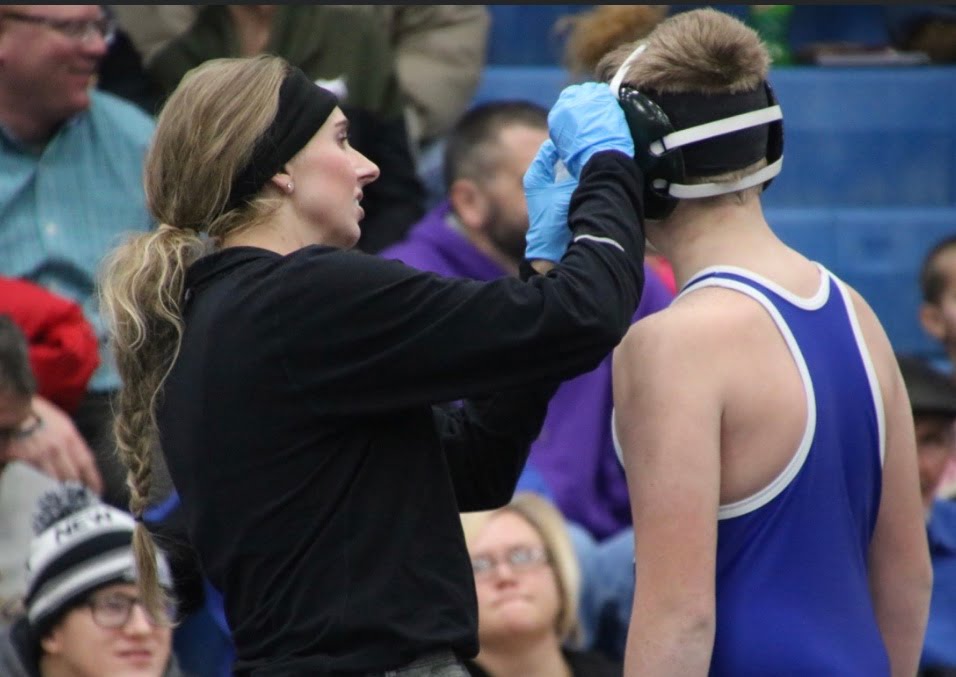Communication and honesty are staples of any relationship, especially among certified athletic trainers, student-athletes, coaches, administrators and parents.
“It’s vital to the success of the student- athlete,’’ said Kylie Meyer, ATC, L, the lead Certified Athletic Trainer at Davenport, Iowa’s North High School. “The lines of communication must always be open and honest.’’
Meyer is in year six as a member of the Rock Valley family (her 7th as an ATC) and her first guiding the athletic training forces of North student-athletes. Meyer said there is a right time and a wrong time to see the school’s athletic trainer.
“First, we are there to help,’’ she said. “That’s how the coaches, the student-athletes, parents and the school’s administration see it. And we/I appreciate it.
“If a student-athlete is looking for a day off – a day they decide to take by themselves – and there is nothing wrong with the student-athlete – then that is considered the wrong time (to visit the trainer).’’
If an injury in competition or practice or a lingering injury is aggravated, those are instances of the right time for a trainer to assist. An athletic trainer can be one’s guide to the best course of care and oftentimes the first point of intervention.
Meyer says the most important step to assure the health and well-being of any student-athlete is communication.
“It is our job to treat, to inform coaches and parents, to document all we do and make sure the student-athlete is a priority,’’ Meyer said. “The best interest of the student-athlete being treated should be the best interest of all involved. We are available and the student-athlete, coaches and parents should know we are there to help.’’
Meyer lauds the time, effort and dedication of all prep coaches, especially the staff at North High School for their commitment to the well-being of each student-athlete in their care.
“They want what is best for the student-athlete,’’ she said. “And the lines of communication are open.’’
The high school training room is often filled and a good place for student-athletes to share their day. While judgment is a huge part of an athletic trainer’s day, when it comes to care for an athlete the training room is a sounding board and judgment-free. It is also a place where meticulous records – issues, visits, private information for coaches, student-athletes and parents – are kept.
“It’s OK if a student-athlete wants to share their day, good or bad,’’ Meyer said. “It should be a place where the goal – if they are injured – is to get them healthy and back on the field or the court. There should be honest and open dialog about injuries and if they want to vent about something outside of sports, I will listen.
We encourage sharing, but we don’t pass judgment on things other than what we are trained to do,’’ Meyer added. “ I do, however, have granola bars, crackers and fruit snacks on hand if the student-athlete misses lunch or needs something to eat. Even a Tootsie Roll, maybe, for a burst of energy. The training room is an important piece to the puzzle and it’s unique in its own way.’’
Meyer says – and appreciates – the value schools put on the important services a certified athletic trainer provides.
“The student-athlete respects what we do and the coaches who see all that we do, want us and know the positive impact we have on their program.’’ Meyer said
And the student-athlete knowing when it’s the right time to see the school’s certified athletic trainer?
“They are learning and understanding when,’’ Meyer said. “And that is important.’’
And vital to the success of any athletic program.
By: Johnny Marx, Storyteller
